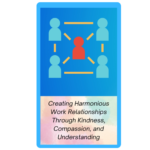“Price is what you pay. Value is what you get.” — Warren Buffett
In a world driven by consumerism, where sales pitches scream for attention and flashy ads attempt to lure wallets open, it’s easy to equate the cost of something with its worth. But Warren Buffett—arguably one of the most disciplined and successful investors in history—offers a simple yet profound truth: “Price is what you pay. Value is what you get.”
This quote transcends investing. It’s a guiding principle for life, business, and personal decision-making. Let’s unpack what it truly means—and why understanding the difference between price and value could save you from financial mistakes, poor decisions, and missed opportunities.
Price: The Immediate Cost
Price is objective. It’s the number on the tag. The fee on the invoice. The digits you see when you check out online. It’s quantifiable, fixed (at least temporarily), and almost always the first thing we look at.
We ask:
- “How much is it?”
- “Can I afford it?”
- “Is it cheaper elsewhere?”
These are reasonable questions. But they’re also incomplete.
Focusing on price alone is like judging a book by its cover or a house by its paint. It tells you nothing about what’s inside. The truth is, price doesn’t always reflect worth. Two items can cost the same yet deliver vastly different experiences, results, or returns.
Value: The Long-Term Benefit
Value is subjective. It’s the utility, the impact, the experience, and the return you get after the transaction is complete. It’s what the item or service does for you. Unlike price, value unfolds over time.
A $500 phone that lasts five years and performs flawlessly might offer more value than a $200 phone that breaks in a year.
A $2,000 course that lands you a new career has infinitely more value than a free tutorial that leaves you confused.
A luxury mattress might cost more upfront, but the years of pain-free sleep could be priceless.
In Buffett’s world, value investing is about buying quality companies at fair prices—not just cheap stocks. Because in the long run, quality outperforms the bargain bin.
Why We Confuse Price with Value
Humans are wired for instant gratification. A lower price feels like an immediate win. We’re conditioned by deals, discounts, and scarcity marketing. Retailers exploit this every day:
- Buy one, get one free.
- Today only: 50% off.
- Save $200 instantly.
But no matter how good the deal sounds, the question remains: Is it worth it?
A “deal” that gets no use or fails to deliver results is actually expensive, not cheap. Because every dollar spent without value is a dollar wasted.
Buffett’s wisdom challenges us to stop asking “How much does it cost?” and start asking “What will this do for me?”
Real-World Examples: Price vs. Value
- Education
A college degree might cost thousands, but if it equips you with skills, connections, and confidence, the long-term return can be massive. On the flip side, a cheap course that delivers no transformation is overpriced at any cost. - Health and Wellness
Buying organic food, a gym membership, or mental health therapy might feel expensive. But what’s the value of a longer, healthier life? Compare that to the long-term cost of neglect: medical bills, missed work, or reduced quality of life. - Marketing Services
A business may choose a $300 website instead of a $3,000 one. But if the latter converts leads, boosts credibility, and grows the brand, it’s the better value by far. - Investing
Buffett himself is a master of finding undervalued companies—businesses with solid fundamentals that are temporarily underpriced. The value lies not in what they cost today, but what they’ll be worth years down the line.
How to Judge True Value
Before pulling the trigger on any purchase or investment, ask yourself:
- What problem does this solve?
- What result am I expecting?
- How long will this benefit me?
- What’s the opportunity cost of not getting it?
- What am I really paying for—convenience, peace of mind, growth?
And perhaps most importantly:
- If I look back a year from now, will I be glad I invested in this—or regret it?
These questions shift your thinking from price-centric to value-driven. They make you a wiser buyer, investor, and decision-maker.
The Illusion of Cheap
Sometimes, cheap is the most expensive choice.
Here’s why:
- Low price often means low quality.
You may pay twice when you have to replace it. - Discounted services often lack support.
When things go wrong, you're on your own. - Fast and cheap rarely equals good.
It might save you today but cost you tomorrow in lost time, reputation, or opportunity.
As the old saying goes: “Buy nice or buy twice.”
Warren Buffett’s Investing Lens
Buffett didn’t build his fortune by chasing low prices. He built it by purchasing great businesses at good prices—not mediocre businesses at rock-bottom deals.
He looks for companies with:
- Strong earnings potential
- Trustworthy management
- Long-term competitive advantages
Price is only one factor. Value—true, sustainable, enduring value—is what matters most.
This applies just as well to our daily lives. Whether it’s a relationship, a book, a mentor, or a financial decision—if it enriches your life, it’s worth far more than its sticker price.
Final Thoughts: What Are You Really Paying For?
Every purchase is more than a transaction—it’s a decision about priorities, goals, and mindset. When you lead with value, you buy with confidence. You invest with clarity. You live with fewer regrets.
So the next time you hesitate at the checkout screen or weigh a big decision, remember Buffett’s wisdom:
“Price is what you pay. Value is what you get.”
Let price be a factor—but never the deciding one. Because in the end, value determines whether something is a cost… or an investment.






